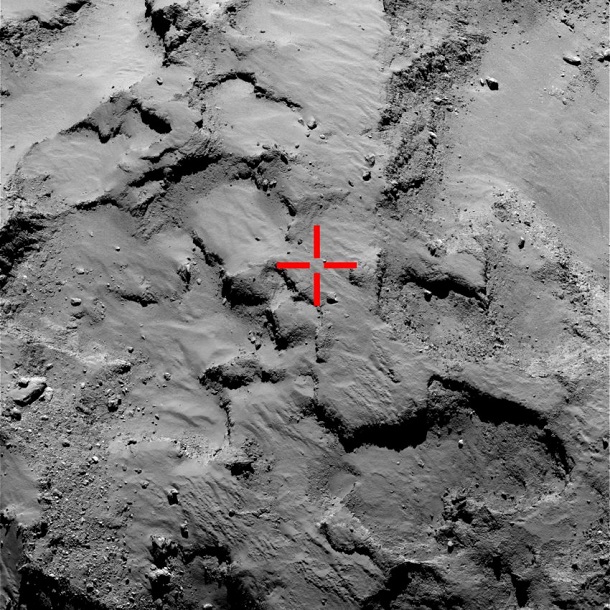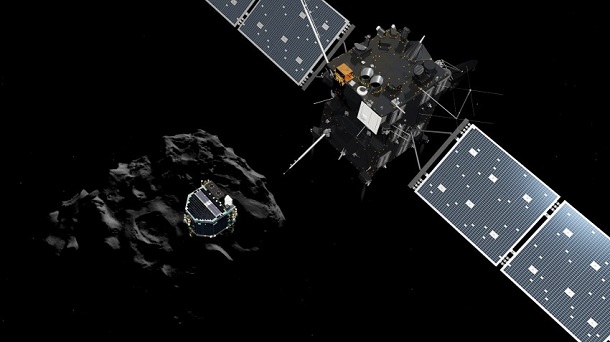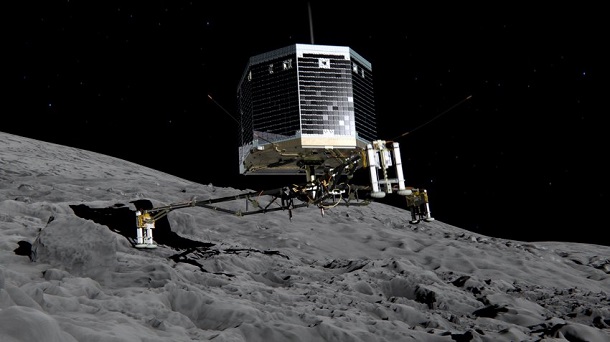Of all the ten experiments on the comet Tschuri are data – now the elaborate analysis begins. First results show that: The celestial body has a hard surface and little dust.
The mini-lab “Philae” sleeps, but the exploration of comets Tschuri continues. To the delight of those in charge of the comet lander sent in on Friday night with the last remaining energy successfully all measurement data obtained. “All ten experiments are run, and all ten experiments, there is data,” said Thomas Schutz, spokesman for the German Aerospace Center (DLR).
The mission was a “complete success”, declared “Philae” project leader Stephan Ulamec by DLR. Accordingly, the refrigerator-sized mini lab worked by 56 hours, as well as its inspectors on the ground. When after and arrived to the data collected, had broken out in the control room in Cologne again cheers.
The so-called First Science sequence is run, said contactor. Since Monday morning for the “Philae” competent scientists were sitting together in Cologne in order to analyze the data. The spokesman warned, however, against exaggerated expectations: “The evaluation of such experiments can take years.” But the first information are now available.
Comet landing:Hard shell, little dust

“Now we know: ‘hopping’ on the hard surface on the Philae is, there were only ten or twelve inches of dust,” said the Head of Operations at the European Space Agency ESA, Paolo Ferri, on Monday the radio station HR info.
Before the historic landing of “Philae” on the Tschuri mentioned comet last Wednesday, the scientists had only speculate on the surface condition of the tail star. According to Ferri took “Philae” enormously detailed photos of the comet’s surface. “The images we have seen, are not yet published, but they were fantastic,” Ferri said. “I’ve seen pictures that look like coral reefs on the ocean floor, incredible structures.”
Comet landing:Turned towards the sun awning

“Philae” was on Wednesday afternoon on the comet 67P / Churyumov-Gerasimenko, short Tschuri landed. The battery was programmed for a power supply of about 60 hours, then solar batteries should step in. However landed “Philae” at a different location than planned, namely in an inclined position, and possibly on a crater rim. Therefore, the laboratory was much less than expected from sunlight – correspondingly less energy deliver the awning.
After all, the scientists “Philae” could turn and his awnings still 35 degrees before the Lander abschaltete due to power shortage. The larger sun canopy is now in a better angle to the sun and can fill up more energy. The hope is that “Philae” can start up again from his sleep mode when the comet approaches the sun further in the coming months.
If the batteries are actually charged Landers once again, the investigation of the comet could be continued. “From the data of the first experiments, further questions arise,” explains DLR spokesman contactor. Can you program the instruments differently or change an experiment?
The landing of “Philae” on Tschuri – the first of a man-made device on a comet in space history – was hailed as a historic success. The aim of the mission are new insights into the early days of the solar system. Is searched by organic molecules, as they could have played a role in the emergence of life on Earth.
[adrotate group=”8″]

